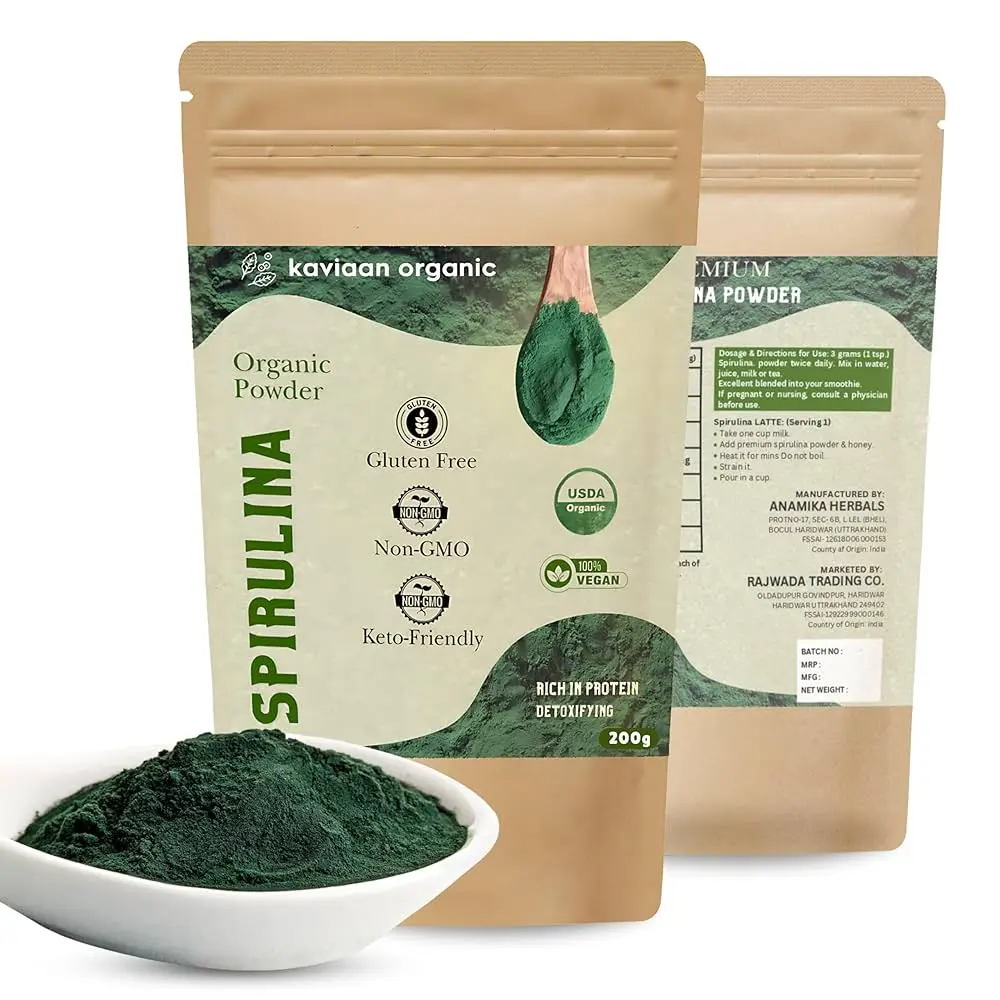Superfoods are no longer a niche trend—they’re a lifestyle choice for millions seeking to support immunity, energy, and long-term wellness. Among the most powerful of these is spirulina, a blue-green algae packed with protein, vitamins, minerals, and antioxidants. But if you’ve ever hesitated to try it, there’s one question you’ve likely asked yourself: what does spirulina taste like?
While spirulina’s nutrient profile is second to none, its flavor is—without question—unique. In this guide, we’ll explore the natural taste of spirulina, why it tastes the way it does, how to make it more palatable, and why the benefits far outweigh any initial flavor reservations.
Spirulina’s Natural Taste Profile
To describe spirulina’s taste in one word? Earthy.
More specifically, spirulina is often described as having a strong seaweed-like, grassy, or umami flavor. Some also detect subtle bitterness or even hints of sulfur, especially in raw or powdered forms. The taste comes from its natural growing environment—freshwater lakes and mineral-rich ponds—and its high chlorophyll content, which gives it that deep green color and unmistakable aroma.
Those who are new to spirulina often compare the flavor to:
- Nori sheets (used in sushi)
- Unsalted seaweed
- Over-steeped green tea
- Wheatgrass or barley grass juice
For many, it’s an acquired taste. But with the right format and pairing, spirulina can be easily incorporated into any daily wellness routine.
To explore the flavor in more depth, check out this comprehensive guide on what spirulina tastes like.
Why Does Spirulina Taste This Way?
The taste of spirulina is a direct result of its composition and cultivation:
1. High Chlorophyll Content
Chlorophyll gives spirulina its vibrant green hue and “green” flavor. It’s also responsible for many of spirulina’s health benefits, including detox support and oxygenation.
2. Protein and Amino Acids
Spirulina is over 60% protein by weight. These amino acids contribute to its savory, umami taste—similar to nutritional yeast or soy.
3. Mineral-Rich Growth Medium
Because it’s cultivated in alkaline lakes, spirulina absorbs essential trace minerals that may also lend to its unique flavor profile.
Powder vs. Tablets: Does the Form Change the Taste?
Absolutely.
One of the biggest taste concerns comes with spirulina powder, which is typically added to smoothies or juices. While powders offer versatility, the bold flavor can easily overpower other ingredients.
On the other hand, spirulina tablets—like those offered by BioOptimal Supplements—allow you to reap all the nutritional benefits without tasting spirulina at all. This is the preferred choice for many health-conscious adults who value efficiency, ease, and a neutral flavor experience.
How to Make Spirulina More Palatable
If you’re using spirulina powder and want to soften its flavor, here are a few tried-and-true tips:
- Blend it into smoothies with strong flavors like pineapple, banana, or mango
- Pair it with citrus—lemon, orange, or lime help cut the earthiness
- Mix with cacao or matcha for antioxidant-rich superfood combinations
- Use in small amounts to start (1/2 tsp or less) until your palate adjusts
Still unsure about spirulina’s flavor? Opt for organic spirulina tablets instead and bypass the taste issue altogether.
Who Should Consider Spirulina—and Why the Taste Is Worth It
Taste aside, spirulina is one of the most nutrient-dense foods on the planet. It contains:
- Complete protein with all 9 essential amino acids
- Vitamins B1, B2, B3, and iron
- Calcium, magnesium, and potassium
- Antioxidants like phycocyanin (which gives it its blue-green pigment)
It’s especially beneficial for:
- Busy professionals looking for clean energy support
- Women managing immunity, stress, or fatigue
- Older adults seeking gentle joint support and cardiovascular health
- Athletes needing a non-synthetic recovery aid
For anyone serious about long-term wellness, a few seconds of earthy taste is a small tradeoff for the benefits spirulina provides. Better yet, choosing tablets ensures that taste doesn’t interfere with your routine at all.
Final Thoughts: Embrace the Benefits, Manage the Flavor
So, what does spirulina taste like? It’s earthy, grassy, and undeniably green—but also manageable with the right delivery method. For many wellness-minded individuals, spirulina’s benefits far exceed its taste concerns.
Whether you’re experimenting with smoothies or seeking a quick, taste-free option, spirulina deserves a spot in your superfood lineup. And with BioOptimal Supplements offering high-quality, organic spirulina tablets, getting your daily dose has never been easier—or more convenient.
Also Read-How to Get Professional Business Photos in Budget










